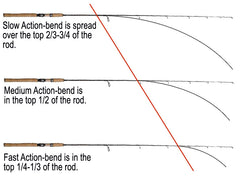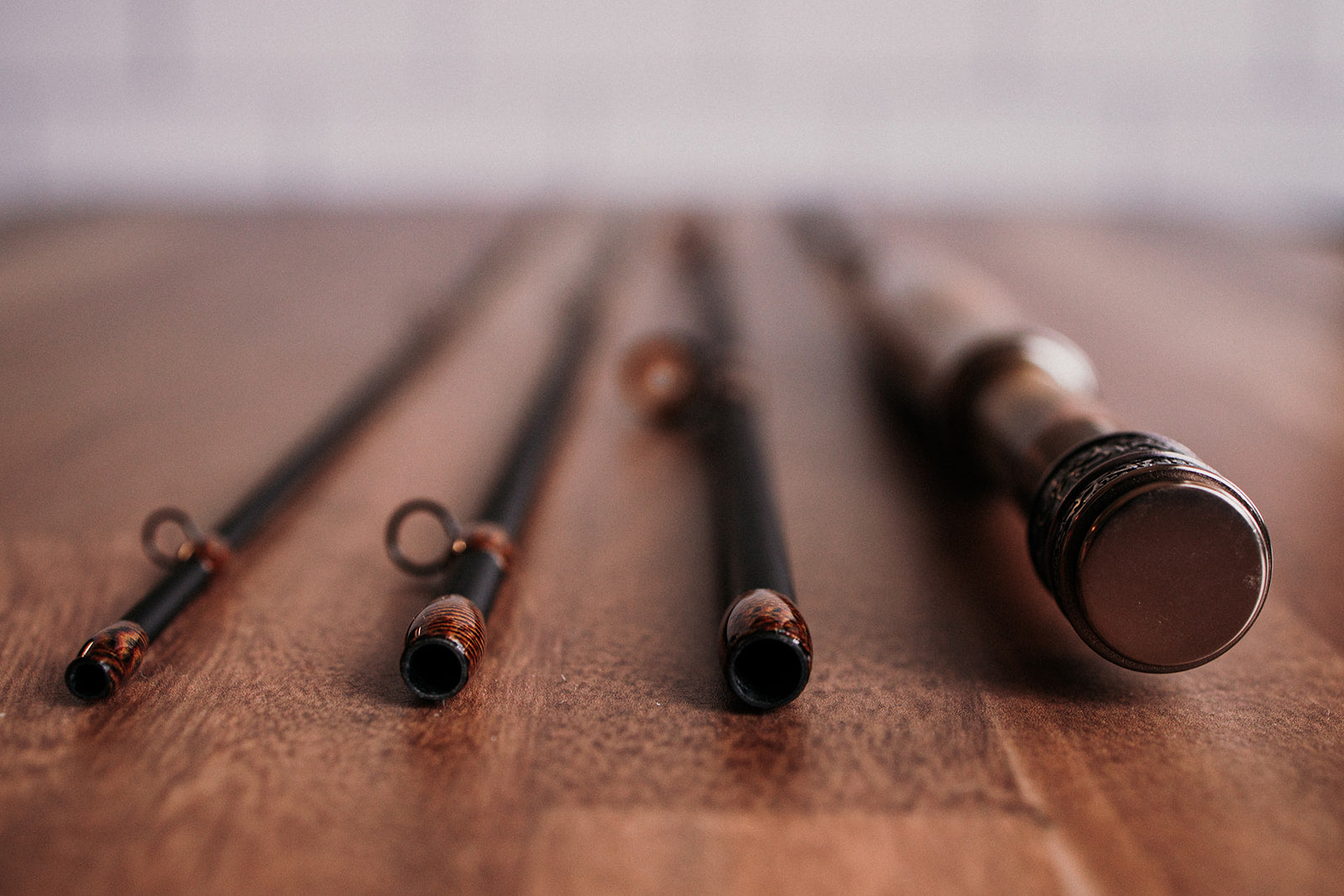How to choose a fly rod
In full disclosure, up until eight or so years ago, the topic of whats the best rod to use was as puzzling to me as what fly to use. The years have taught us there is a lot of personal preference when picking out a fly rod. This is especially true when it comes to reel seats, handle shape/length, colors, wraps and brands. Varying rod aesthetics can attribute to performance strengths and deficits in some cases, but for the more part unnoticeable variations. Add to this, fly rod action, length and # of pieces and it can feel like overload quickly.
We've cut through the clutter and hope to make this a bit easier for you. There are a few fundamentals you should know in choosing the right fly rod for you.
As a jumping off point, the beginning fly fisher, especially those looking to targeting fresh water game, will likely be in search of a 9-foot, 4-6w-weight, medium-flex rod. This is a universal staple range. You can catch everything from wild trout to carp in streams, rivers, ponds or lakes with this range.
Simply put, you need to consider, the big 3 when picking out your fly rod. Weight, length and action.
Weight
Fly rods are rated by weight. The weight indicates the size of fishing line that matches the rod. Generally you can line up or down by one size, which is why a 5wt is the best universal size for a trout rod. Most people think about fish species when it comes to choosing a weight and while that works just fine, I would also encourage you to think about the size of fly you are going to be throwing, and the intended use of the rod.
As a general rule on rod weights:
-
1-4: sunfish and small trout, small streams
-
4-6: general trout, larger streams and rivers
-
6-8: bass, carp, light steelhead, salmon. and saltwater
-
8-10: winter steelhead, stripers, salmon, and saltwater
-
10-14: big game
Length
Fly rods act as a lever, so length is a very important aspect when picking a fly rod. The longer the rod, the easier it will be to get more distance on your cast, mend your line, and fight fish. However if you are on a smaller stream you will want a shorter rod to navigate overhanging brush and for added precision when casting at close range.
As noted before, most agree the standard trout rod is a 9ft 5wt rod. This length lets you get the distance, accuracy, and line control needed in most trout situations.
Action
The three types of fly rod action are fast-action, medium-action and slow-action. Each of these types of action have their benefits and drawbacks. It is important to match up the type of fly rod action with the type of fishing you will be doing.
Fast Action
A fast-action rod is just what the name implies. At the end of the backcast, the tip of the fly rod is slightly bent but the rest of the rod is virtually straight as an arrow.
Pros:
-
Long Casts - The stiffness of the rod allows for more power in the cast.
-
Fishing on windy days - The stiffness of the rod allows easier casting on windy days since the rod is more powerful.
-
Somewhat less physically demanding - Due to the power inherent in fast action fly rods, the angler works less to cast the same distance compared to using a slower, more flexible rod.
Cons:
-
Difficult for Beginners - Beginners might struggle learning how to cast with a fast-action rod. The sheer power in the rods makes "getting a feel" for the fly and fly line difficult. Precise casts in particular will be difficult for new anglers.
-
Not ideal for short casts - Not the best rod to be used where short casts are necessary - such as spring creeks. For short casts, a more flexible rod provides greater accuracy and a "smoother touch." For small stream fishing, a fast-action rod has a substantially greater likelihood of leading to the fly and fly line being slammed into the water - making the fish you're stalking head for the hills.
Medium or Moderate Action
Medium action fly rods are the most versatile of the rods available. They perform well in a wide variety of conditions. They are also easier to learn with than with a fast-action rod. On the backcast with a medium action fly rod, the rod will be bent beginning from about halfway down the rod - thus falling in-between fast and slow action rods.
Overall, if an angler will only own one fly rod for freshwater trout fishing, then it should be a medium action fly rod unless the fishing situation falls into one of the other categories above or below.
Pros:
-
Most versatile of all the actions
-
Great for anglers of all abilities
-
If your going to have just one fly rod, this is it
-
Does it all
Cons:
-
Not as powerful as a fast action rod
-
Not as precise as fast
Slow Action- aka "Full Flex"
Slow action rods are primarily for those individuals that fish smaller streams and use mostly lighter tippets the majority of the time. I won’t say that this is the only area in which these can be fished, but they are the most effective in these scenarios. These are often on the market in the form of fiberglass or bamboo.
Pros:
-
Great for small streams
-
Very forgiving for new anglers
-
Fun for smaller fish to feel like larger fish
Cons:
-
Not for distance
-
Windy days can be very difficult
-
Slower hook sets
-
Not as accurate

Rod Features
There are other features to a rod that might make it the best choice for you.
-
Number of pieces: Fly rods can come in a 1 piece all the way up to a 7 piece. Four-piece rods are becoming the standard as they are easy to pack and travel with. This is 90% of what we carry.
-
Materials: Most rods these days are composed of a carbon or graphite compound (numerous debates out there on the similarities and differences here), although both fiberglass and bamboo has been making a comeback in recent years.

In Conclusion
There are plenty of people who love nothing more than discussing fly fishing (myself included). You'll soon discover that most anglers new or old have there own opinion and are happy to give it to you. We say, keep it simple. Once you have that staple rod in your arsenal and are looking for your second, third, 20th... be clear on what you plan to use it for and circle back to the guide above. Even better, if you have questions, give us a call. Our crew is always happy to talk fly rods with you.













